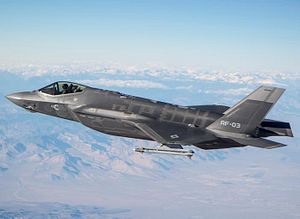Japan is interested in purchasing more F-35 joint strike fighters in the face of North Korea’s growing military capabilities and aggressive posturing on the Korean Peninsula, according to a senior U.S. lawmaker, the Washington Examiner reports.
“There will be the F-35,” Republican Congressman Ted Yoho, a member of the U.S. House of Representatives Foreign Affairs Committee said. Precise details of aircraft deal remain murky. “it’s more like a letter of an intent,” Yoho said. “I think it’s an agreement that, ‘yes, We will do this, we will support more arms sales,’” he added.
On September 5, U.S. President Donald Trump announced on Twitter that he will allow “Japan & South Korea to buy a substantially increased amount of highly sophisticated military equipment from the United States,” without offering additional details.
As I reported previously (See: “US, ROK, Japan to Deploy Over 100 F-35 Fighter Jets Near North Korea by 2020s”), the Republic of Korea (ROK) and Japan have been considering for some time to place follow-up orders for additional fifth-generation stealth multirole Joint Strike Fighter F-35As — the aircraft’s conventional takeoff and landing variant.
South Korea expects the delivery of 40 F-35A fighter jets by 2021. “While South Korea reduced the original request from 60 to 40 aircraft, the [2014] agreement between the United States and South Korea stipulates that 20 additional F-35A fighter jets can be procured at a later stage depending on the security environment on the Korean peninsula,” I explained elsewhere.
Japan plans to induct 42 F-35As in the coming years. The first four Japan Air Self-Defense Force (JASDF) F-35A fighter jets, built in the United States, have already been delivered. The remaining 38 F-35A aircraft are currently being assembled in Japan. Japan’s first batch of F-35As will be used for the training of JASDF pilots in the United States.
“JASDF is considering arming its F-35 fleet with long-range standoff missiles and guided bombs including the long-range, precision-guided Joint Strike Missile (JSM), the Joint Air to Surface Standoff Missile (JASSM), and the GBU-31JDAM (Joint Direct Attack Munition) air-to-ground guided bomb,” I explained last month. Japan also plans to acquire up to 100 additional aircraft by the middle of the 2020s, as I noted elsewhere:
The Japanese government is expected to award a contract for the procurement of up to 100 new fifth-generation air superiority fighter in the summer of 2018 (See: “Japan’s Air Force to Receive 100 New Stealth Fighter Jets”). The future defense contract will be worth over $40 billion. So far, U.S. aircraft maker Boeing has expressed interest in bidding for the contract along with the Eurofighter consortium and Swedish defense contractor SAAB.
Lockheed Martin, the F-35s manufacturer, has so far not announced that it will participate in the bidding process. Furthermore, despite President Trump’s recent announcement, it appears unlikely that South Kore and Japan will receive additional fighter jets soon.
First, the F-35A right from the beginning was a stopgap measure for Japan in order to bridge the gap between retirement of its current fleet of fighter jets and the induction of a (possibly domestically-produced) next-generation fighter jet. (Lockheed-Martin is purportedly already involved with the project in some capacity.) Also, expectations that Japan’s aircraft industry would play a larger role in production of the F-35A (e.g. producing part of the F-35’s fuselage in the country) has remained unfulfilled until now.
Second, South Korea has suffered from a string of corruption scandals involving the ROK military, which has hampered the acquisition of new military hardware and slowed down its indigenous KF-X stealth fighter aircraft program, whereas Japan’s convoluted defense budgeting and piecemeal defense procurement system has made the placement of bulk orders difficult (Japan’s current defense budget request includes funding for six F-35As).

































